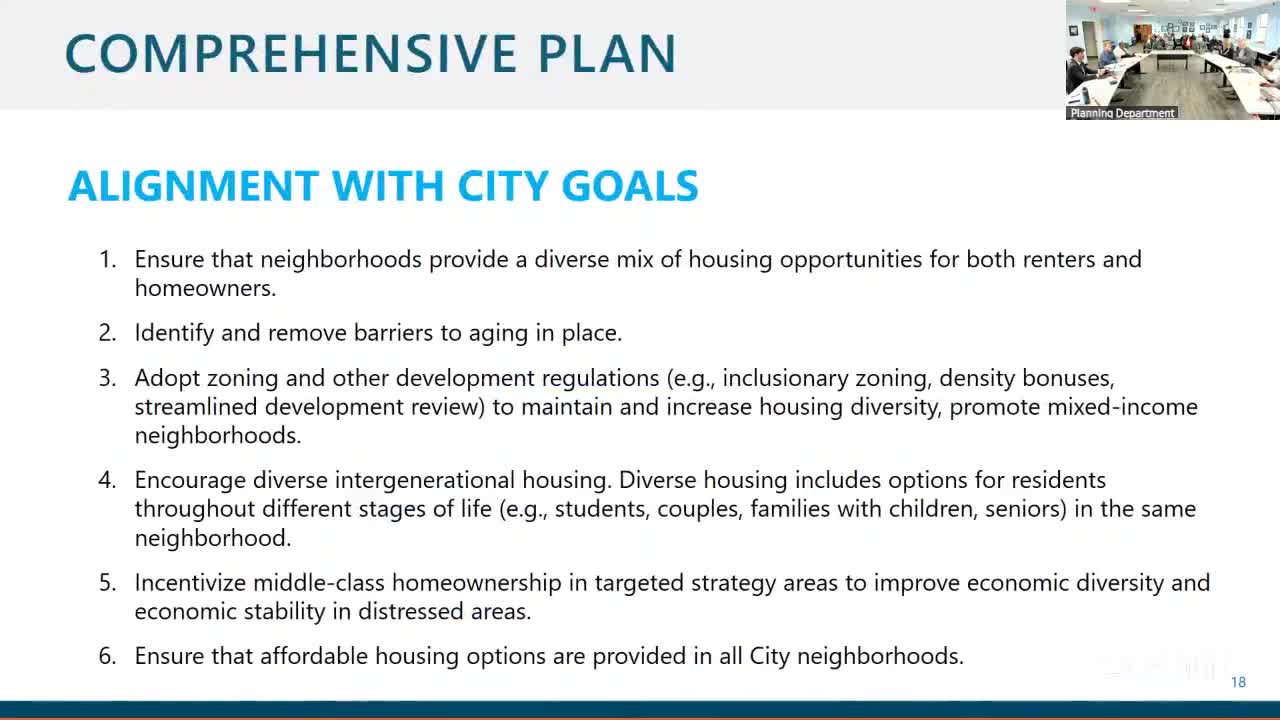City Council proposes regulations for accessory dwelling units to increase housing diversity
April 09, 2025 | Albany City, Albany County, New York
This article was created by AI summarizing key points discussed. AI makes mistakes, so for full details and context, please refer to the video of the full meeting. Please report any errors so we can fix them. Report an error »

The Albany Planning Board's recent meeting on April 8, 2025, highlighted significant discussions surrounding housing diversity and the introduction of accessory dwelling units (ADUs) in the city. The board emphasized the importance of creating a diverse mix of housing options to meet the needs of all residents, particularly as the population ages.
One of the key proposals discussed was the ordinance to allow ADUs across most zoning districts in Albany, with the exception of industrial and land conservation areas. This move aims to provide additional housing options for residents, particularly for seniors wishing to age in place. The proposed regulations stipulate that these units must be secondary to single-family homes, with a maximum size of 800 square feet, and cannot be used for short-term rentals. This is intended to ensure that the units remain affordable and accessible for long-term residents.
The board presented maps illustrating the distribution of single-unit dwellings and the demographics of homeowners versus renters in Albany. Notably, many areas with a high concentration of seniors also correspond to single-unit zoning districts, indicating a potential need for more flexible housing options. The discussion underscored the challenges faced by cost-burdened households, where residents spend over 30% of their income on housing. By allowing ADUs, the city hopes to alleviate some of this financial strain.
Board members raised questions about the implications of the ordinance, particularly regarding ownership changes and the enforcement of owner-occupancy requirements. The ordinance mandates that the primary residence must be owner-occupied for the ADU to remain in use, which could complicate situations where the homeowner sells the property.
While the proposal aims to enhance housing diversity, some board members expressed concerns about the limitations placed on townhouses and multi-family structures, suggesting that these could also benefit from ADU regulations. The conversation highlighted the need for a balanced approach that considers existing housing types and the potential for increased density in certain neighborhoods.
As Albany moves forward with these discussions, the proposed ADU ordinance represents a significant step toward addressing housing needs in the community, particularly for aging residents and those seeking affordable living options. The Planning Board's ongoing efforts reflect a commitment to creating a more inclusive and diverse housing landscape in Albany.
One of the key proposals discussed was the ordinance to allow ADUs across most zoning districts in Albany, with the exception of industrial and land conservation areas. This move aims to provide additional housing options for residents, particularly for seniors wishing to age in place. The proposed regulations stipulate that these units must be secondary to single-family homes, with a maximum size of 800 square feet, and cannot be used for short-term rentals. This is intended to ensure that the units remain affordable and accessible for long-term residents.
The board presented maps illustrating the distribution of single-unit dwellings and the demographics of homeowners versus renters in Albany. Notably, many areas with a high concentration of seniors also correspond to single-unit zoning districts, indicating a potential need for more flexible housing options. The discussion underscored the challenges faced by cost-burdened households, where residents spend over 30% of their income on housing. By allowing ADUs, the city hopes to alleviate some of this financial strain.
Board members raised questions about the implications of the ordinance, particularly regarding ownership changes and the enforcement of owner-occupancy requirements. The ordinance mandates that the primary residence must be owner-occupied for the ADU to remain in use, which could complicate situations where the homeowner sells the property.
While the proposal aims to enhance housing diversity, some board members expressed concerns about the limitations placed on townhouses and multi-family structures, suggesting that these could also benefit from ADU regulations. The conversation highlighted the need for a balanced approach that considers existing housing types and the potential for increased density in certain neighborhoods.
As Albany moves forward with these discussions, the proposed ADU ordinance represents a significant step toward addressing housing needs in the community, particularly for aging residents and those seeking affordable living options. The Planning Board's ongoing efforts reflect a commitment to creating a more inclusive and diverse housing landscape in Albany.
View full meeting
This article is based on a recent meeting—watch the full video and explore the complete transcript for deeper insights into the discussion.
View full meeting
